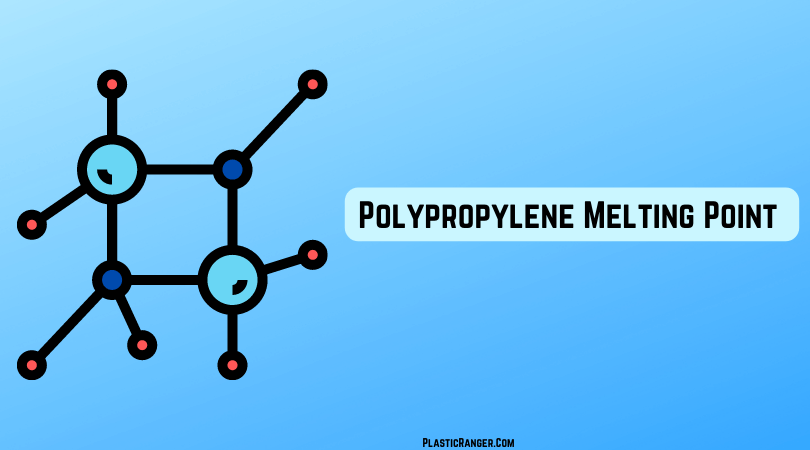Polypropylene Melting Point
The melting point of Polypropylene typically ranges from 160 to 170 °C.
Polypropylene, often termed PP, is a thermoplastic material with a crystalline structure formed by blending different polypropylene monomers. Renowned for its strength and rigidity, it is highly resistant to various external factors, making it one of the most commonly utilized thermoplastics in the manufacturing industry.
Due to its versatility, Polypropylene is widely employed in producing various products across numerous sectors worldwide.
This article endeavors to deliver an all-encompassing examination of the melting point of Polypropylene, delving into its influence on the material’s general properties and various vital aspects.
Before immersing ourselves in the subject matter, it’s crucial to grasp the meaning behind the term “melting point.”
What is the Melting Point, and How Do We Measure It?
The melting point of plastic signifies the temperature at which a plastic substance transitions from a solid to a liquid state.
This vital parameter establishes the processing temperature range for plastic materials, encompassing techniques such as injection molding, extrusion, and various other thermal processing methods.
Differential scanning calorimetry (DSC) is the most prevalent technique for determining the melting point of any plastic material.
DSC evaluates the heat flow within a polymer as it is methodically heated or cooled at a regulated pace.
The melting point is ascertained by scrutinizing the endothermic peak in the heat flow curve, representing the energy needed to liquefy the polymer.
Hot-stage microscopy is an alternative method for identifying the melting point, which offers a direct visual representation of the polymer melting phenomenon.
Influential Factors Impacting the Melting Point of PP
Numerous factors influence the melting temperature of Polypropylene, and the following are some of the most prominent attributes affecting its melting point.
Molecular Weight
The melting point of Polypropylene is directly impacted by its molecular weight. Polymers with higher molecular weights typically boast higher melting points, thanks to the increased entanglements among polymer chains that strengthen intermolecular forces.
Crystallinity
Crystallinity reflects the level of organization within a polymer’s molecular structure. Polypropylene with a higher degree of crystallinity demands more energy to break down its orderly structure during melting, resulting in a higher melting point.
Additives and Fillers
Additives and fillers like antioxidants, flame retardants, and pigments can influence the melting point of Polypropylene.
These components alter the molecular structure and crystallinity, with their specific effects hinging on the type and concentration used.
Copolymers and blends
Copolymers and blends of Polypropylene with other polymers can also impact the melting point.
Different monomers in the polymer chain or blending with other polymers can change the overall molecular structure, ultimately affecting the melting point.
How Polypropylene Melting Point Affects its Properties
The world of polymers is a fascinating one, with even the slightest changes in temperature having a significant impact on their properties.
Take PP, for example – its melt temperature is pivotal in determining its mechanical and thermal characteristics and how it behaves during processing.
In this exploration, let’s uncover how the melting point of PP plays a crucial role in shaping its other remarkable properties.
Mechanical Properties
Polypropylene exhibits a melting point range of 160°C to 170°C, which is comparatively higher than that of other widely used plastics.
Its elevated melting point enables it to retain its mechanical properties at high temperatures, making it ideal for deployment in settings that experience high temperatures.
Its melting point directly impacts the tensile strength, impact resistance, and elongation at the break of Polypropylene.
As the melting point of polypropylene increases, its polymer chains become more structured, leading to a stronger and more rigid material.
This rigidity and strength allow Polypropylene to withstand deformation and retain its shape under stress, augmenting its robustness and resilience.
Conversely, as the melting point decreases, the material becomes more pliable and flexible, making it appropriate for applications that demand increased flexibility.
Physical Properties
The melting point of Polypropylene is an essential factor that significantly impacts its physical properties, including density, transparency, and crystallinity.
As the melting point increases, the density of Polypropylene usually decreases, resulting in a lighter and more buoyant product.
This characteristic is beneficial in applications where weight reduction is crucial, such as manufacturing automotive components and packaging materials.
Moreover, the melting point of Polypropylene also plays a critical role in determining its transparency and crystallinity. A higher melting point increases crystallinity, creating a more rigid and opaque material.
This quality can be beneficial in applications where high strength and rigidity are needed. Still, it may not be ideal for applications that require transparency, such as in packaging and consumer goods.
Thermal Properties
Polypropylene’s thermal properties, such as its heat resistance and thermal conductivity, are closely related to its melting point.
The high melting point ensures the material can withstand high temperatures without deforming or melting. It is suitable for applications requiring heat resistance, such as automotive components and electrical appliances.
Moreover, the melting point impacts the thermal conductivity of the material.
Higher melting points result in lower thermal conductivity, meaning the material can effectively insulate and protect against heat transfer.
This characteristic makes Polypropylene an ideal choice for applications where thermal insulation is crucial, such as in building materials for construction and insulation for electrical wiring.
Chemical Properties
The chemical properties of Polypropylene, such as its resistance to chemical degradation, solubility, and environmental stability, are also influenced by its melting point.
The high melting point of Polypropylene provides excellent resistance to chemical degradation, ensuring the material remains stable when exposed to various chemicals and solvents.
Additionally, the melting point affects the solubility of the material.
Higher melting points result in lower solubility, making Polypropylene less susceptible to dissolution by solvents, which can compromise its structural integrity.
This solvent resistance makes Polypropylene suitable for applications that may come into contact with chemicals, such as laboratories and industrial settings.
How Does PP Melting Point Affect Its Processing?
|
Melting Point Range
|
Effect on Processing
|
| Low (less than 130°C) |
Easier to process due to reduced viscosity and increased flowability. However, the material may experience degradation during processing.
|
| Medium (130°C to 170°C) |
Optimal processing range as the material maintains good flowability while retaining its mechanical properties.
|
| High (above 170°C) |
Difficult to process due to high viscosity and reduced flowability, making it necessary to use specialized equipment. However, the material is suitable for high-temperature applications.
|
FAQs
Below are the frequently asked questions on the melting point of Polypropylene. Let’s dig deep into learning more about the topic.
Is Polypropylene safe to breathe?
Inhalation of fine particles may cause respiratory irritation. Fumes created by thermal processing can be the reason for irritation, pulmonary edema, and a possible asthma-like response. However, that will happen if you consistently inhale polypropylene particles. A random contact once in a while won’t negatively affect you.
Does Polypropylene leach chemicals?
Polypropylene doesn’t leach chemicals and is generally considered safe for humans. It is considered to be the safest of all plastics. Its excellent heat-resistant capability is why it doesn’t Leach chemicals even when exposed to warm or hot water. It is also approved for use in food storage.
Can you microwave Polypropylene?
The unique chemical structure of Polypropylene makes it transparent. As it doesn’t absorb microwave energy and has a relatively high softening point, Polypropylene is a suitable resin for producing microwave food reheat containers such as bowls, dishes, and related food.
How strong is Polypropylene?
Polypropylene is a rigid and durable material that effectively retains its strength and properties in various situations and applications. Polypropylene is so strong that the products made from it are considered to be four times stronger than steel.
How much Polypropylene is recycled every year?
Talking about the United States, According to The Recycling Partnership’s 2020 State of Curbside Recycling report, more than 1.6 billion pounds of Polypropylene were to be recycled in 2020 alone; according to estimations, there are about 17 pounds of Polypropylene used by a single family household.
Suggested Read
- PTFE Vs. Teflon: What are The Differences?
- Antistatic vs. Static Dissipative Plastics | Which One to Choose?
Final Thoughts
In conclusion, polypropylene melting point is a critical factor that significantly impacts its physical and mechanical properties.
A higher melting point results in a more rigid and robust material, making it ideal for high-stress applications.
On the other hand, a lower melting point makes the material more flexible and pliable, making it suitable for applications requiring increased flexibility.
The versatility and performance of Polypropylene at varying melting points make it a widely used and popular material in various industries.
Please leave your thoughts and opinions in the comments section below. Wishing you a wonderful day ahead!
Quick Navigation


